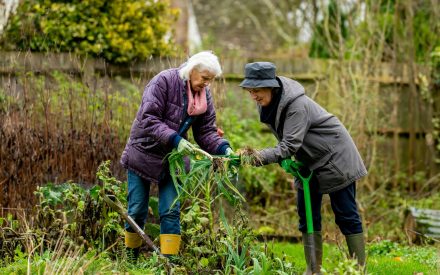Aging-friendly communities generally have one or more of the six characteristics listed below.*
Inclusive
People of all ages, races/ethnicities, and abilities, especially elders, are welcome.
Sustainable
Residents are committed to a lifestyle that is sustainable environmentally, economically, and socially. Size matters. People need to know each other, and scale determines the nature of human interaction. Small is better.
Healthy
The community encourages and supports wellness of the mind, body, and spirit, and, to the same degree, plans and prepares programs and systems that support those dealing with disease, disability, and death.
Accessible
The setting provides easy access to the home and community. For example, all homes, businesses, and public spaces are wheelchair-friendly and incorporate universal design features. Multiple modes of transportation are encouraged.
Interdependent
The community fosters reciprocity and mutual support among family, friends, and neighbors across generations.
Engaged
Promotes opportunities for community participation, social and civic engagement, education, and creative expression.
*Source: Moving beyond place: Aging in Community. Generations, 33(2), 12-17, Thomas, W. H., & Blanchard, J. M. (2009).
If you know of a community in Wisconsin that represents a “best practice” example of one or more of these attributes, please send a brief description to Kristin Litzelman or Sara Richie.

 Is your community Aging-friendly?
Is your community Aging-friendly?  What Makes an Aging Friendly Community
What Makes an Aging Friendly Community Reframing Aging – Toolkits and Resources from Frameworks Institute
Reframing Aging – Toolkits and Resources from Frameworks Institute AARP’s Website on Family Caregiving: When Family Caregiving Needs a Boost of Energy and Resourceful Thinking
AARP’s Website on Family Caregiving: When Family Caregiving Needs a Boost of Energy and Resourceful Thinking


